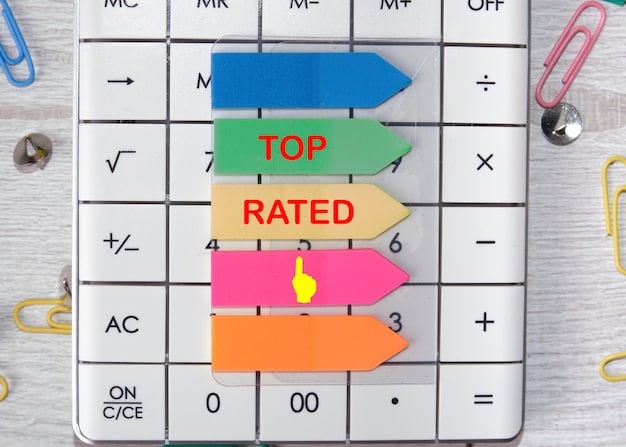Unemployment Benefits Updates: Extensions & Job Training Programs

Recent updates to unemployment benefits in the U.S. include extensions and job training programs designed to support individuals facing job loss and economic hardship.
Navigating the complexities of unemployment benefits can be challenging. Let’s delve into the latest updates to unemployment benefits, claiming extensions and job training programs available to support you during periods of unemployment.
Understanding Unemployment Benefits
Unemployment benefits provide temporary financial assistance to eligible workers who have lost their jobs through no fault of their own. These benefits are designed to help individuals meet their basic needs while they search for new employment. Understanding the basic framework of these benefits is essential before exploring the recent updates.
Eligibility requirements, benefit amounts, and duration vary by state, but generally, you must have worked for a certain period, meet specific earnings criteria, and be actively seeking employment to qualify. The landscape of unemployment benefits has seen significant changes recently due to economic fluctuations and government interventions.
Basic Eligibility Criteria
To be eligible for unemployment benefits, individuals generally need to meet several criteria set by their state’s unemployment agency. These criteria typically include:
- Job Loss Circumstances: You must have lost your job through no fault of your own, such as a layoff or company downsizing.
- Work History: You need to have worked for a specific period and earned a minimum amount of wages in what is termed the “base period,” which is typically the first four of the last five completed calendar quarters before filing your claim.
- Availability and Work Search: You must be able and available to work, and you are required to actively seek employment while receiving benefits. This often involves registering with the state’s workforce agency and documenting your job search activities.
How Benefits Are Calculated
Unemployment benefits are usually calculated as a percentage of your past earnings. Most states use a formula base on your earnings during the base period to determine your weekly benefit amount. This amount is subject to a maximum limit, which varies by state. Factors influencing the calculation include:
- Base Period Earnings: The higher your earnings during the base period, the higher your weekly benefit amount is likely to be.
- State-Specific Formulas: Each state has its own formula for calculating benefits, so the exact method can vary.
- Maximum Benefit Amount: States set a maximum weekly benefit amount, which can limit the benefits received even if your earnings would otherwise qualify you for a higher amount.
Unemployment benefits serve as a safety net that help unemployed workers meet their financial obligations while they look for work. Recent updates to these programs aim to provide additional support and opportunities for individuals facing unemployment.
Recent Federal Extensions to Unemployment Benefits
In times of economic crisis, the federal government often steps in to provide additional unemployment benefits on top of what states offer. These federal extensions are designed to help workers who have exhausted their state benefits and are still struggling to find employment. Understanding these extensions can provide crucial support for those in need.
Several federal programs have been enacted in recent years to extend unemployment benefits, offering additional weeks of support to individuals who have used up their state benefits. These programs also often include provisions for expanded eligibility and increased benefit amounts.

Overview of Key Federal Programs
Several key federal programs have played a significant role in extending unemployment benefits during economic downturns. These include programs which offer extended assistance to workers:
- Pandemic Unemployment Assistance (PUA): This program provided benefits to individuals not typically eligible for regular unemployment insurance, such as the self-employed, independent contractors, and those with limited work history. PUA offered up to 79 weeks of benefits during the COVID-19 pandemic.
- Pandemic Emergency Unemployment Compensation (PEUC): PEUC provided additional weeks of benefits to individuals who had exhausted their regular state unemployment benefits. It offered multiple extensions, providing up to 53 weeks of additional benefits.
- Federal Pandemic Unemployment Compensation (FPUC): This program provided an additional weekly payment to all unemployment benefit recipients. The amount varied, ranging from $300 to $600 per week, depending on the legislation in effect.
Eligibility for Federal Extensions
Eligibility for federal unemployment extensions often hinges on specific criteria and the timing of unemployment claims. Typically, individuals must have exhausted their regular state unemployment benefits to qualify for federal extensions. In addition to exhausting their original benefits, claimants may also have the seek assistance during the operational window of the program. Other factors incluide:
- Exhaustion of State Benefits: Generally, you must exhaust all regular state unemployment benefits before becoming eligible for federal extensions.
- Active Unemployment: You must still be unemployed and actively seeking work to continue receiving benefits under these extensions.
- Program Duration: Federal extensions are typically tied to specific periods, so you must apply and qualify during the program’s effective dates.
Federal extensions have been used as a tool to support workers during times of crisis. By understanding thow these programs work, individuals can best position themselves to take advatage of the benefits.
Strategies for Claiming Unemployment Extensions
Claiming an unemployment extension requires careful attention to detail and adherence to specific procedures. Navigating this process can be stressful, but by following a clear set of steps, you can mitigate stress and improve the likelihood of a successful claim.
The application process for unemployment extensions typically involves several steps, including gathering necessary documentation, understanding eligibility requirements, and following the specific guidelines of your state unemployment agency. Effective communication with the agency and diligent record-keeping are essential.
Step-by-Step Application Process
To successfully claim an unemployment extension, follow these steps:
- Monitor Your Benefit Balance: Keep track of your remaining state unemployment benefits. Knowing when you are nearing exhaustion will help you prepare for the extension application.
- Gather Required Documentation: Collect all necessary documents, including your Social Security number, driver’s license, proof of address, and employment history.
- Apply Online or by Phone: Most states allow you to apply for extensions online or by phone. Check your state’s unemployment agency for specific instructions.
Common Mistakes to Avoid
Avoiding common mistakes can prevent delays or denials in your application for unemployment extensions. Be sure to give the process the attention to detail it requires.
- Inaccurate Information: Providing incorrect or incomplete information on your application can lead to delays or denials.
- Failure to Meet Deadlines: Missing deadlines for application or required documentation can result in ineligibility.
- Not Actively Seeking Work: Failing to meet the work search requirements can jeopardize your eligibility for continued benefits.
Claiming an unemployment extension is like navigating a maze, but with the right preparation and caution, you can reach the end. By taking the process seriously, you can mitigate stress and improve your chance of success.
Job Training Programs and Unemployment Benefits
Job training programs offer unemployed individuals the opportunity to gain new skills and enhance their employability, playing a vital role in helping people re-enter the workforce. By participating in these programs, unemployed workers can improve their marketability and increase their chances of finding suitable employment.
Many states offer job training programs specifically designed for unemployment benefit recipients. These programs may include classroom instruction, on-the-job training, apprenticeships, and workshops focused on job search skills. It’s important to be aware of how these programs can intersect with unemployment benefits.

Types of Training Programs Available
Job training programs come in various forms, each catering to different skill sets and career goals. A diversified approach to the availability of job training is essential to support the workforce. Some examples can include:
- Vocational Training: These programs provide hands-on training in specific trades or industries, such as welding, carpentry, or healthcare.
- Technical Skills Training: These programs focus on developing technical skills needed in today’s job market, such as computer programming, data analysis, or cybersecurity.
- Job Search Workshops: These workshops offer guidance on resume writing, interviewing skills, and networking strategies to help participants find employment.
Impact on Unemployment Eligibility
Participating in job training programs can have varying effects on unemployment eligibility. In many cases, states allow individuals to continue receiving unemployment benefits while enrolled in approved training programs. However, it is essential to understand the specific rules and regulations in your state to ensure compliance.
Job opportunites will continue to evolve, and training programs will be necessary to prepare workers for these new opportunities. These programs help them improve their skills and prepare them for future positions.
State-Specific Resources and Programs
Unemployment benefits and job training programs vary significantly from state to state, reflecting the unique economic conditions and workforce needs of each region. Therefore, it’s crucial to understand the specific resources and programs available in your state.
Each state has its own unemployment agency responsible for administering benefits and providing job training resources. These agencies offer a wealth of information on eligibility requirements, application procedures, and available programs. Direct contact with your state’s agency ensures you receive accurate and up-to-date information.
Finding Information on State Websites
State unemployment agency websites are valuable resources for information. Navigating there can be simplified with the following steps:
- Identify Your State’s Agency: Determine the name of your state’s unemployment agency. This is often referred to as the Department of Labor or Workforce Development Agency.
- Visit the Website: Use a search engine to find the official website of your state’s unemployment agency.
- Navigate the Site: Look for sections related to unemployment benefits, job training programs, and eligibility requirements.
Local Workforce Development Boards
Workforce development boards are local organizations that help connect job seekers with employment and training opportunities. These boards work closely with local employers, community colleges, and other organizations to provide targeted services that meet the needs of the regional job market.
State resources are there to support you as you seek to take your next step. With careful research and access, these programs can help you advance forward.
Strategies for Maximizing Unemployment Benefits
Maximizing your unemployment benefits involves understanding the rules and regulations, effectively managing your claim, and leveraging available resources to support your job search. Strategic planning and proactive engagement can help you make the most of the assistance available to you.
Effective claim management includes diligent record-keeping, accurate reporting of information, and timely responses to agency requests. Additionally, staying informed about changes to unemployment laws and programs can help you access additional benefits or support.
Budgeting and Financial Planning
Unemployment can create financial strain, making budgeting and financial planning essential. Effective strategies include:
- Assess Your Finances: Review your income, expenses, assets, and debts to get a clear picture of your financial situation.
- Create a Budget: Develop a budget that prioritizes essential expenses, such as housing, food, healthcare, and transportation.
- Reduce Spending: Look for ways to cut unnecessary expenses, such as entertainment, dining out, and subscription services.
Networking and Job Search Tips
Actively networking and employing effective job search strategies can increase your chances of finding employment quickly. Some ways you can start are:
- Networking: Attend job fairs, industry events, and networking meetings to connect with potential employers and learn about job openings.
- Online Job Boards: Utilize online job boards, such as Indeed, LinkedIn, and Glassdoor, to search for job openings that match your skills and experience.
- Resume Optimization: Tailor your resume to highlight your skills and experience relevant to each job you apply for.
Unemployment can bring many challenges, but with the right strategies, you can effectively manage this difficult period.
| Key Point | Brief Description |
|---|---|
| 📝 Eligibility | Meeting state-specific criteria, like job loss circumstances and work history. |
| 💰 Benefit Calculation | Based on past earnings, subject to a state maximum. |
| 🧑💻 Job Training | Programs to gain new skills, impacting unemployment eligibility. |
| 🔎 State Resources | Agencies offering info on benefits, applications, and training. |
Frequently Asked Questions
▼
Eligibility typically depends on your work history, the reason for your job loss, and your ability to work and actively seek employment. Check your state’s unemployment agency website for specific criteria.
▼
Many states offer vocational training, technical skills training, and job search workshops. These programs aim to improve your skills and employability.
▼
Benefits are usually calculated as a percentage of your past earnings during a base period. Each state has its own formula, subject to a maximum weekly benefit amount.
▼
In many cases, yes. States often allow you to continue receiving benefits while enrolled in an approved training program, but you should verify with your state’s agency.
▼
Monitor your benefit balance and explore available federal or state extensions. Gather necessary documents and apply for an extension before your current benefits expire.
Conclusion
Staying informed about the latest updates to unemployment benefits, claiming extensions and job training programs is essential for anyone facing job loss. By understanding the eligibility requirements, application procedures, and available resources, you can navigate the unemployment system effectively and improve your chances of finding suitable employment.





